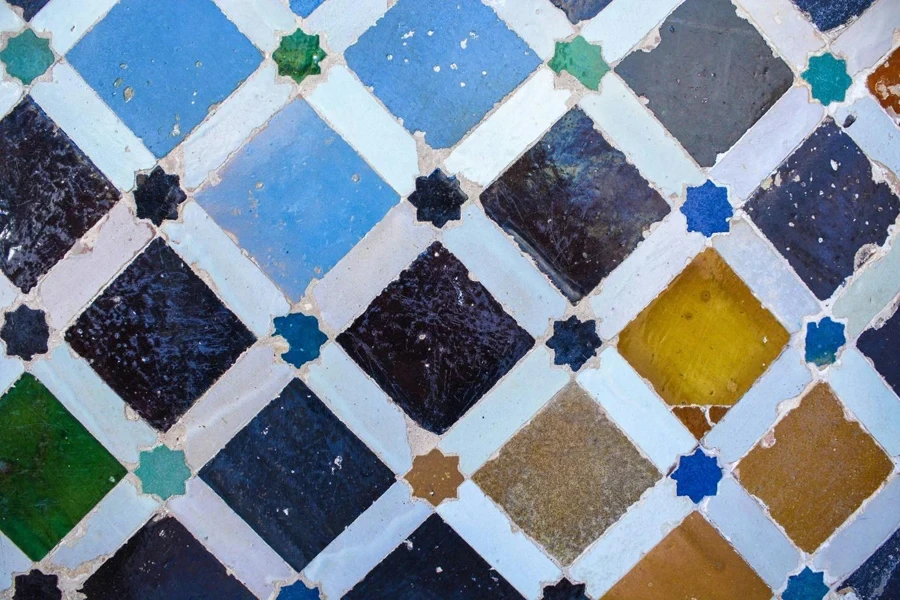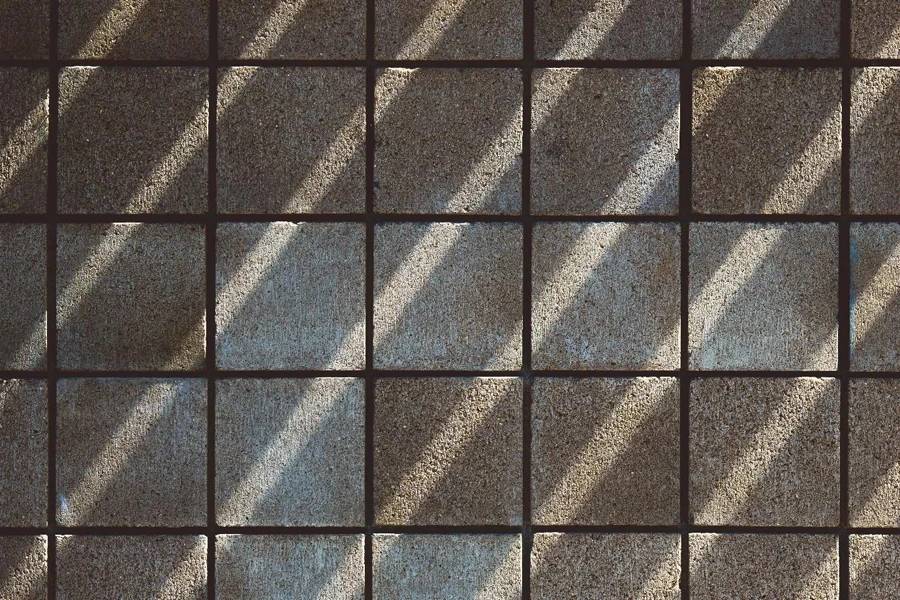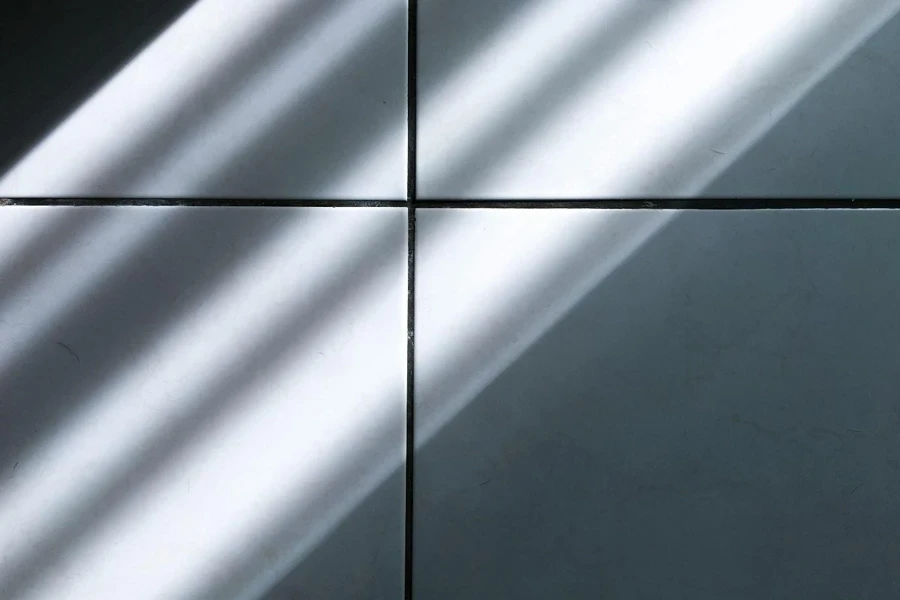Table of Contents
● Introduction
● Market overview
● Different types and their features
● Things to consider when selecting products
● Conclusion
Introduction

Carpet tiles are transforming the flooring sector with their adaptability and sturdiness while being easy to install making them an option for homes and businesses alike. The global market for carpet tiles is booming due to their versatility and durability features as customers are looking for eco-friendly flooring solutions that are also modern in design and functionality. Different options for carpet tiles, such as tufted, needle-punched, and woven carpets, offer various style choices rooted in personal tastes. Choosing the best carpet tiles requires careful consideration of material selection, application, maintenance requirements, and dye methods.
Market overview

Market growth and scale
In 2023, the global market for carpet tiles reached a value of $4635 million. It is estimated to hit $6358.9 million by 2030, with a CAGR of 4.5%. The demand for durable and versatile flooring solutions in homes and businesses is rising which is the main cause for growth. North America leads in market share, followed by Europe and China, showing regional interest in carpet tiles.
Driving trends
Progress in manufacturing methods and the increasing demand for friendly materials play a significant role in shaping market trends today. Developments like using recycled resources and enhancing dye processes are becoming more popular as they align with the increasing consumer consciousness and regulatory efforts toward sustainability. Consequently, companies are directing their efforts toward creating goods that align with these changing preferences, fueling growth in the market.
Different types and their features

Carpet tile construction
Tufted carpets
Tufted carpets are widely popular in the market. They make up 95% of commercial carpet tiles because they are produced quickly and at a lower cost compared to other options available today. These carpets come in a variety of designs. They may fall short when meeting high standards for quality and durability over time.
Woven carpets
Woven carpets crafted using a loom are renowned for their top-notch quality and lasting durability, which makes them perfect for high-end projects. Their intricate design boosts both their lifespan and aesthetics.
Needle-punched carpets
Needle-punched carpets are great for entry mats and outdoor spaces as they dry quickly and resist sunlight exposure.
Carpet tile styles
Loop pile
Loop pile carpets offer a feel with various design choices to suit different spaces. They are crafted by threading yarn through the base material to ensure durability and longevity.
Cut pile
Cut pile carpets are known for their formal look with upright yarn loops. They are typically found in darker hues that exude luxury and sophistication. The trimmed ends of the yarn result in a plush texture that is highly desirable in both residential and high-end commercial settings.
Cut and loop pile
By intertwining twisted threads together in cut and loop piles, carpets form textured designs that offer various patterns and styles ideal for use in homes and businesses alike.
Based on materials used
Wool
High-quality wool is a top-notch choice as it provides luxury and durability with resistance to stains despite its higher price tag. Notably, wool fibers are naturally elastic and age well to ensure lasting comfort and insulation properties.
Polypropylene (Olefin)
Polypropylene is both cost-effective and flexible in its uses; it can withstand fading over time. It may not be as long-lasting as some other synthetic materials available in the market today but its exceptional resistance to moisture and mildew makes it a great choice for areas of dampness.
Nylon
Nylon is popular in high-use areas due to its resilient nature and ability to resist stains well. Featuring fibers with excellent resistance to wear and tear and high tensile strength, nylon guarantees durability over time.
Polyester
Polyester carpet tiles are environmentally friendly and simple to dye, with a variety of color choices available. They are crafted from plastic bottles as part of sustainability initiatives; however, they tend to be less resilient than nylon options.
Recycled materials
Recycled materials are becoming more popular due to their eco nature and long-lasting durability while being reasonably priced. The materials commonly used in recycling processes, such as nylon and various synthetic fibers, offer a sustainable alternative that doesn’t sacrifice quality standards.
Things to consider when selecting products

Material choice
Choosing carpet tiles requires knowing the properties of the materials to guarantee lasting quality and effectiveness. Nylon fibers have a structure that helps them bounce back to their original shape after being compressed – perfect for areas with heavy foot traffic that need durability. Nylon is also known for its resistance to wear and tear and its ability to stretch without losing its shape over time. In comparison, polypropylene fibers don’t have the same memory as nylon fibers, so they tend to flatten faster under pressure, from walking on them frequently. In certain conditions, polypropylene may not be as durable due to its lower melting point and reduced elasticity despite its being more resistant to chemical staining and moisture.
Conscious choices like recycled nylon (for example, Econyl) or PET (polyethylene terephthalate) fibers crafted from repurposed plastic bottles are becoming more popular. These sustainable materials boast strength and efficiency to pristine fibers but come with a markedly smaller ecological impact. Recycled nylon maintains the characteristics of fresh nylon, whereas recycled PET fibers offer excellent color retention and resilience against fading.
Application settings
When choosing carpet tiles for use, it’s important to consider density and structure. Opt for tiles with a tuft density (measured in tufts per square inch) and greater pile weight (ounces per square yard) for commercial settings. These attributes help the carpet withstand heavy foot traffic while enhancing its plushness and durability.
Carpet tiles designed for homes usually focus on comfort. Looks first and foremost. They aim to create a sensation with softer textures achieved through taller piles and less density. Furthermore, design options such as pile or cut and loop pile provide various visual textures and patterns that can be customized to complement interior decoration while ensuring durability for household use.
Dye methods
The way carpet fibers are dyed plays a role in how well they perform over time and in different conditions. Solution dyeing is a process where color is added to the polymer before it’s turned into fiber strands. This creates fibers that have color evenly distributed throughout them. With this method of dyeing being used, the resulting carpet tiles are better at resisting fading, damage from UV rays, and harsh cleaning chemicals, which makes them perfect for places with lots of people walking around or for spaces.
Space dyeing involves applying color to the yarn’s surface to create diverse patterns. A drawback is that these fibers are prone to color fading and wear due to abrasions and frequent cleaning. Space-dyed tiles are ideal for spaces with foot traffic that prioritize visual appeal and experience less exposure to environmental factors.
Installation and maintenance
Carpet tiles are made with ease of installation and often come with a peel-and-stick backing or interlocking edges for quick placement and replacement purposes. This design feature allows damaged or stained tiles to be replaced selectively without having to disrupt the floor. The use of quality adhesive systems ensures that the tiles stay firmly in place even under different conditions, like heavy foot traffic and rolling loads.
Keeping floors in good condition is simple. Just vacuum regularly using a HEPA filter to get rid of dust and dirt effectively. For any spills or stains that come up from time to time, use the cleaning products and methods to tackle them easily if you choose tiles with features or built-in stain resistance when renovating your space, like in busy commercial areas. It can help keep things clean and lasting longer.
Conclusion

Carpet tiles offer a long-lasting flooring option that adds aesthetic appeal to various spaces. Their modular design allows for easy installation and upkeep. They come in a range of materials and styles to meet performance and design preferences. Selecting carpet tiles based on material properties, construction methods, dye techniques, and usage needs can help businesses boost both functionality and visual charm in their environments.



